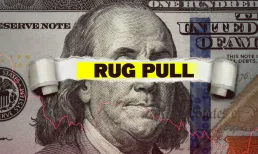In the fast-evolving world of cryptocurrency, the term “rug pull” has become synonymous with one of the most feared forms of scams. Rug pulls can lead to substantial financial losses for investors and have become increasingly common as new, often unregulated, tokens and projects emerge. This article will explore what rug pulls are, why they are dangerous, and provide real-world examples to illustrate their impact.
What Are Rug Pulls?
A rug pull is a type of exit scam where the creators of a cryptocurrency project suddenly withdraw all the funds from the liquidity pool, effectively abandoning the project and leaving investors with worthless tokens. This usually happens in decentralized finance (DeFi) projects, where the project founders can anonymously create and manage tokens or smart contracts.
How Rug Pulls Work
- Token Creation: Scammers create a new token, often hyped with promises of innovative features, partnerships, or high returns. These tokens are typically paired with more established cryptocurrencies like Ethereum in a liquidity pool on decentralized exchanges (DEXs).
- Building Hype: The creators use various marketing strategies to build hype around the token. This can include social media promotions, partnerships, and promises of future developments. The aim is to attract as many investors as possible.
- Liquidity Pool Funding: Investors start buying the token, providing liquidity by pairing it with other cryptocurrencies. As the demand for the token increases, its value rises, encouraging more people to invest.
- The Rug Pull: At a certain point, the creators withdraw all the funds from the liquidity pool, selling their large holdings of the token at the same time. This action drains the pool of its liquidity, making it impossible for investors to sell their tokens. The token’s value plummets to near zero.
- Aftermath: The scammers disappear with the investors’ money, leaving behind a worthless token. Investors who didn’t cash out in time are left with nothing.
The Dangers of Rug Pulls
Rug pulls are particularly dangerous for several reasons:
- Total Loss of Investment: Unlike market fluctuations, a rug pull often results in a complete loss of investment, as the token becomes worthless almost instantly.
- Anonymity of Scammers: In the decentralized and often unregulated world of cryptocurrency, scammers can operate anonymously, making it difficult to track them down or recover lost funds.
- False Sense of Security: The DeFi space can create a false sense of security due to its decentralized nature. However, this same feature makes it easier for scammers to operate without oversight.
- Damage to Trust in DeFi: Rug pulls undermine trust in legitimate DeFi projects, making it harder for the ecosystem to grow and attract new investors.
Real-World Examples
- SushiSwap Incident: In September 2020, SushiSwap, a decentralized exchange, experienced a near-rug pull when its anonymous founder, known as “Chef Nomi,” withdrew $14 million worth of Ethereum from the project’s development fund. Although Chef Nomi eventually returned the funds after public backlash, the incident highlighted the risks associated with anonymous project leaders.
- Meerkat Finance: In March 2021, Meerkat Finance, a DeFi project on the Binance Smart Chain, disappeared with $31 million in investor funds just one day after its launch. This was a classic rug pull where the developers exploited a vulnerability in the smart contract to siphon off the funds.
- Thodex Exchange: In April 2021, the Turkish cryptocurrency exchange Thodex abruptly halted trading, and its CEO disappeared with $2 billion worth of investors’ money. While not a DeFi project, this incident demonstrates the broader risk of rug pulls in the crypto space.
Conclusion
Rug pulls are a severe threat in the cryptocurrency and DeFi sectors, often leading to catastrophic losses for investors. As these scams become more sophisticated, it is crucial for investors to exercise caution, conduct thorough research, and be wary of projects that promise too-good-to-be-true returns. Understanding the mechanics and risks of rug pulls can help protect against falling victim to these fraudulent schemes.





